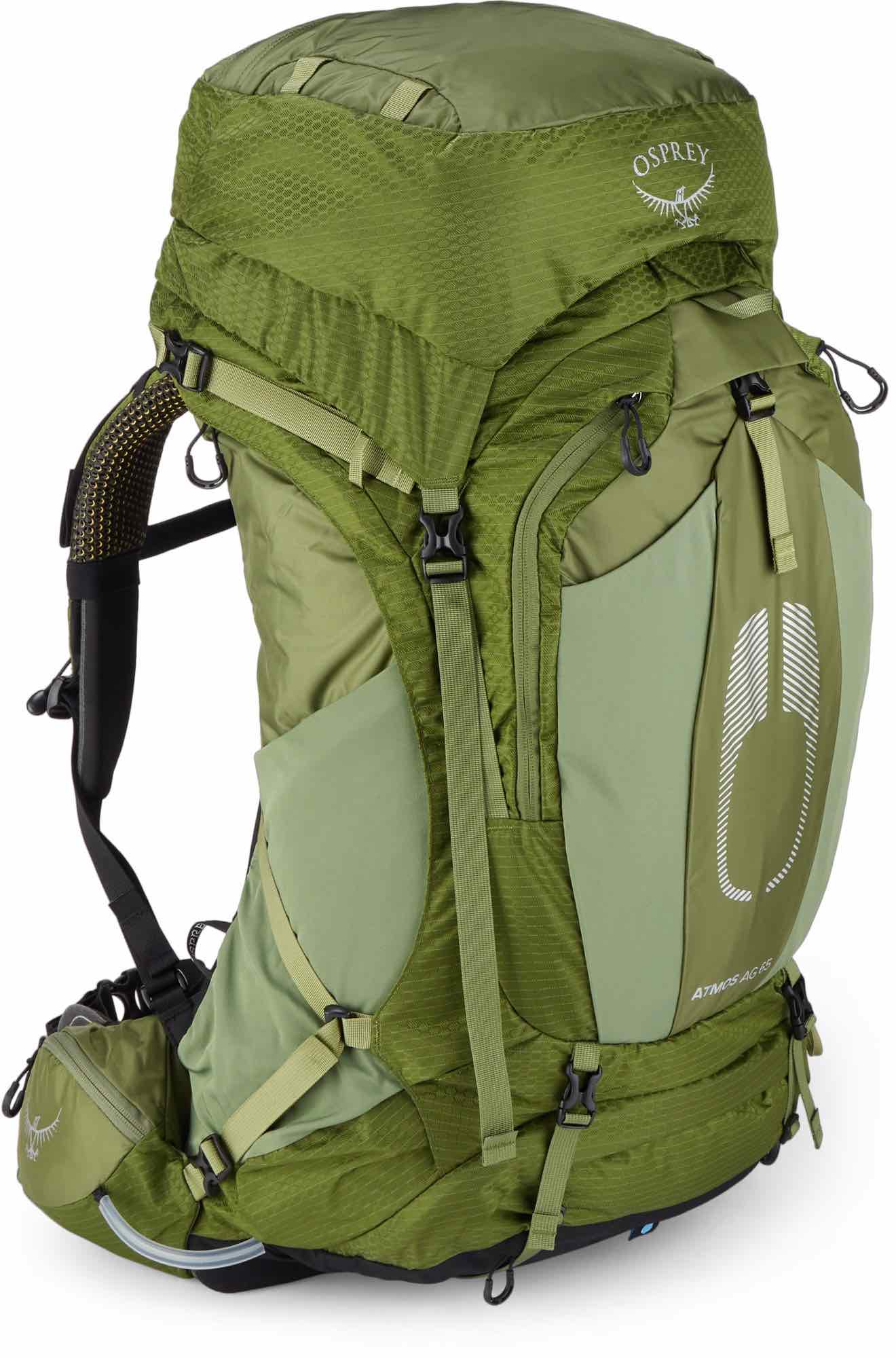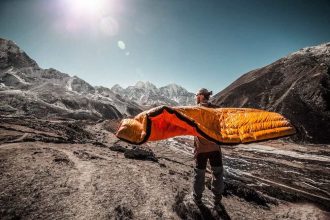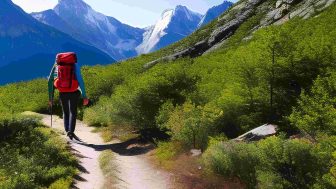Backpacks are an essential tool for people at every stage of life – from elementary school students to college professors. In fact, backpack sales are expected to generate more than $20 billion dollars by the year 2024.
This article will provide you with the best options for eco-friendly backpacks on the market. Our carefully curated list includes bags made from sustainable materials, including recycled plastics, organic cotton, and hemp. These backpacks are not only environmentally responsible, but also durable and stylish, making them perfect for your next adventure.
Sustainable backpacks made from recycled materials
REI Ruckpack

The REI Co-op Recycled Ruckpack 60+ pack consists of a 60-liter backpack and a 20-liter daypack that can be attached to the main bag for a total capacity of 80 liters. The shell is constructed of tough, recycled ripstop nylon.
The shoulder straps are lightly cushioned for extra comfort, with a strap harness that is adjustable to accommodate your upper body length. The rucksack includes a detachable rain cover, lockable zippers, and space for a tube from a hydration reservoir.
Who is the REI Co-Op Rucksack best for? Daily use, travel, work, school.
Why is the REI Ruckpack a sustainable backpack?
- Recycled Materials: The backpack is made from a blend of recycled polyester and nylon, which reduces the amount of virgin materials needed for production. According to the REI website, the backpack’s fabric is made from “bluesign®-approved recycled polyester and nylon”, which means that the fabric meets strict standards for environmental and worker safety.
- Durable Design: The backpack is designed to last for years, reducing the need for frequent replacements and the associated waste. Examples of this are the “reinforced high-abrasion areas” and a “burly TPU-coated base”, which helps to protect the backpack from wear and tear.
- Ethical Production: The backpack is produced in factories that meet high standards for worker safety and fair wages. The Ruckpack is also manufactured using “lean production methods” that help to reduce waste and energy consumption. According to the REI website, the factories are audited for compliance with labor laws, environmental regulations, and other ethical standards. Source: https://www.rei.com/sustainability/product-sustainability
FEATURES
- Capacity: 28 liters
- Materials: Recycled nylon
PROS
- Fabric is heavy-duty, rip-resistant recycled nylon
- bluesign®-approved to be free of toxic chemicals
- Ample storage and organization pockets
- Easy-access side panels
- Hydration system compatible
- Daisy chain to attach gear
- Compression straps
- Load-lifters to securely position the backpack
- Includes a rain cover
CONS
- May be bulkier / heavier compared to other backpacks, which can be a downside for those looking for a lightweight option.
One of the best things about the Atmos AG 65 is how comfortable it feels to wear. The pack is designed to fit your body perfectly, with a mesh back panel and hip belt that mold to your shape. Even on long hikes and with heavy loads, it stays comfortable and
Another great feature is the ventilation system. The pack has a big mesh panel on the back and hipbelt that allows air to flow through, keeping you cool and preventing sweat buildup. The shoulder straps also have open webbing for even more breathability, so you can stay dry even in hot weather.
The pack is made using 210-denier and 500-denier fabric, with a PFC/PFAS-free durable water repellent (DWR) finish
What is the Osprey Atmos AG 65 best for? Backpacking, Daily Use, Travel, Hiking
Why is the Osprey Atmos AG 65 a sustainable backpack?
- Recycled Materials: The backpack is made from bluesign®-approved recycled 210 / 500-denier nylon.
- Repairable: Osprey has a program called “All Mighty Guarantee” which ensures that any damage to the backpack can be repaired or replaced, reducing the likelihood of the backpack being thrown away. Source: https://www.osprey.com/us/en/customer-support/all-mighty-guarantee
- Ethical Production: Osprey is committed to ethical production practices and ensures that its factories meet high standards for worker safety, fair labor practices, and environmental sustainability. Source: https://www.osprey.com/us/en/sustainability-and-responsibility/ethics-in-production/
FEATURES
- Capacity: 65 liters
- Materials: Recycled fabrics
- Suspended Mesh Back Panel
- Adjustable Torso Length
- Sleeping Bag Compartment
- Internal hydration sleeve
- Raincover included
PROS
- Comfortable, snug fit thanks to the mesh back panel and hip belt that conform to your body
- Mesh panels on the back and shoulders provide good airflow
- Made with high-performance, technical materials with the lowest environmental impact
- bluesign®-approved free from toxic chemicals, verified by third-party labs
- Lots of pockets, lash points, and gear loops
CONS
- At 4 pounds 9.8 ounces, the pack is considered on the heavy side for a backpacking pack
- Can’t support loads over 50 pounds
Fjallraven Bergtagen
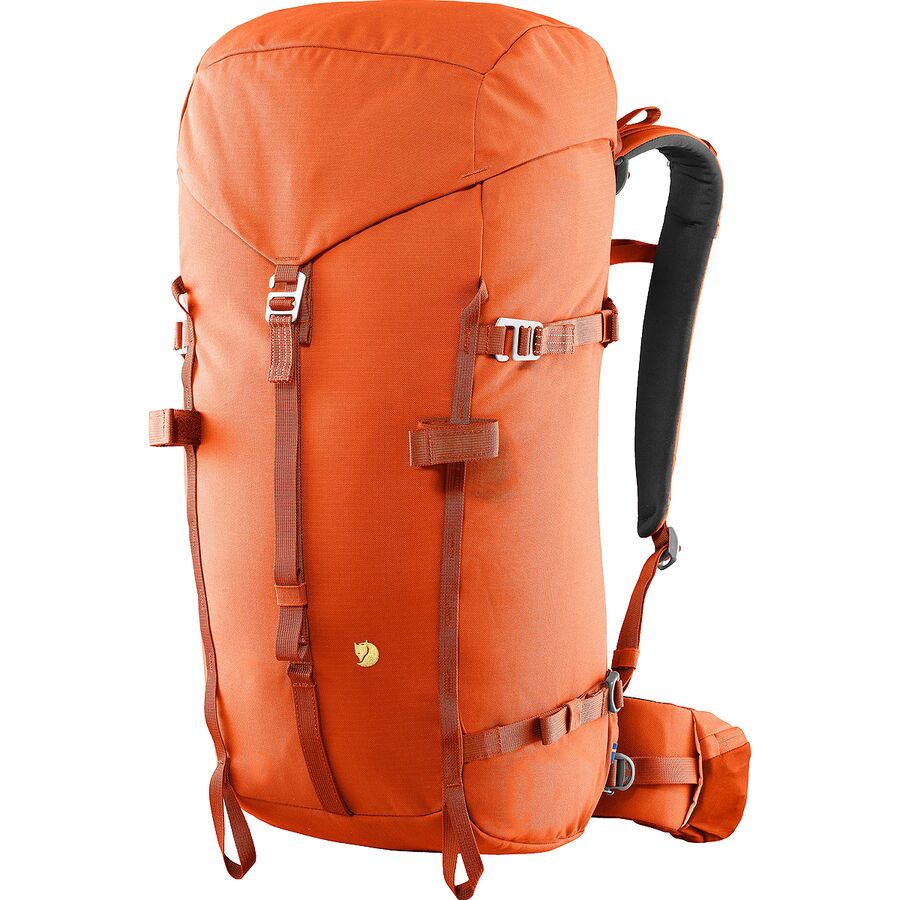
Fjallraven is devoted to sustainability, from initial product design to manufacturing and production. The company prioritizes lifespan, recyclability, utility, and simplicity while using natural and recycled materials. The Fjallraven code of conduct encompasses human rights, animal welfare, environmental protection, sustainable development, and anti-corruption.
Who is the Fjallraven Bergtagen best for? Boating, hiking, mountaineering, kayaking, white water rafting.
Why is the Fjallraven Bergtagen a sustainable backpack?
- Sustainable Materials: The backpack is made from recycled polyester and organic cotton. The fabric is also dyed using a process that saves water and energy.
- Repairable: Fjällräven offers a repair and service program that allows customers to fix their backpacks instead of throwing them away. Source: https://www.fjallraven.com/us/en-us/customer-service/repair-and-service
- Ethical Production: Fjällräven is committed to ethical production, fair labor practices, and environmental sustainability. Source: https://www.fjallraven.com/us/en-us/sustainability/ethical-production
FEATURES
- Activities: Hiking, Mountaineering
- Capacity: 38 liters
- Material: Recycled Nylon
PROS
- Good for carrying buiky, heavy gear
- Rip-resistant
- Waterproof
- High-performance Bergshell fabric
- Optimized for mountain climbing
- Removable frame
CONS
- Pockets on the front and sides are limited
Peak Design Everyday Backpack
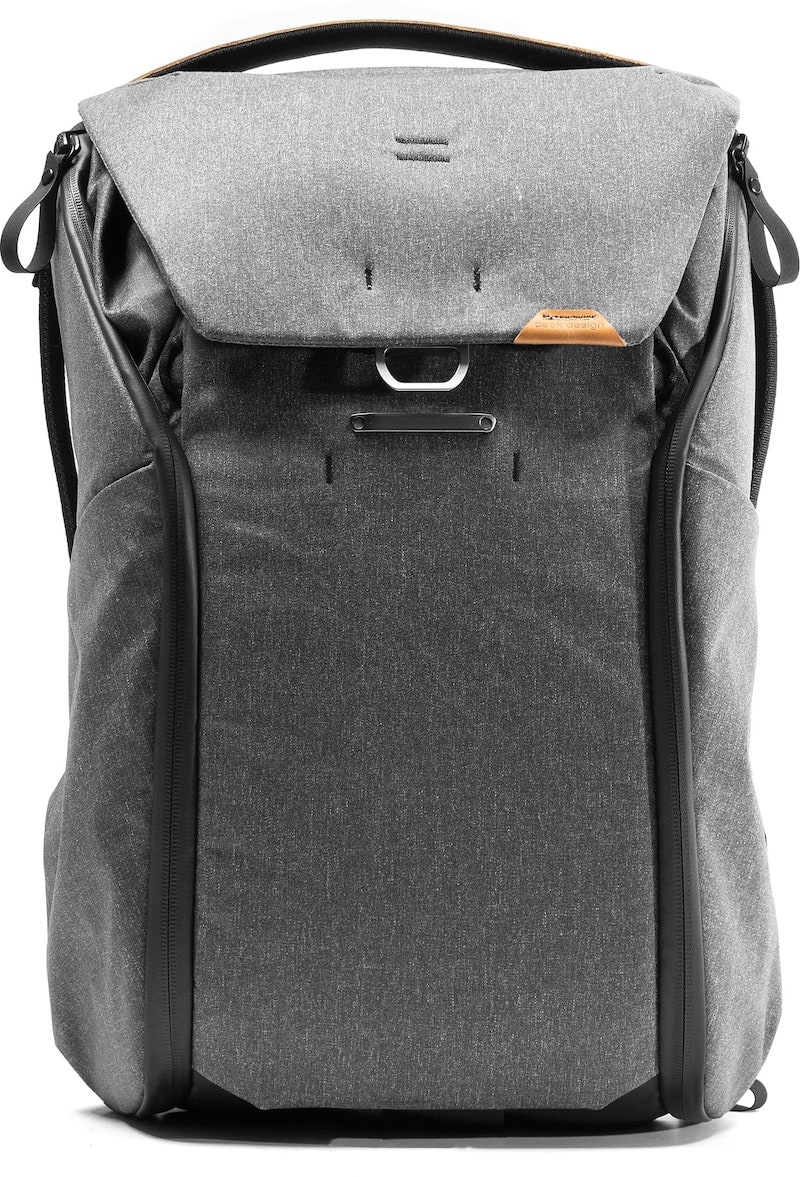
To date, Peak Design has sourced approximately 3 million water bottles of recycled plastic to be used for their outer backpack fabric with their partners at Repreve.
Who is the Peak Design Everyday sustainable backpack best for? Photographers, gear heads, anybody with a lot of equipment to carry around.
Why is the Peak Design Everyday a sustainable backpack?
- Recycled Materials: The backpack is made from 100% recycled 400D nylon canvas shell and recycled interior lining.
- Ethical Manufacturing: Peak Design is committed to ethical manufacturing processes, high standards for worker safety, fair labor practices, and environmental sustainability. Source: https://www.peakdesign.com/pages/sustainability
FEATURES
- Activities: Daily Use, Travel, Photography
- Capacity: 30 liters
- Materials: Recycled polyester, Recycled nylon
PROS
- Expandable compartments
- Polyester and nylon fabric blend provides the best of both fabrics
- Durable, rip proof and water-resistant fabric
- Designed for ease of access, organization, expansion
- bluesign® certified free of dangerous chemicals
Cotopaxi Allpa Del Dia
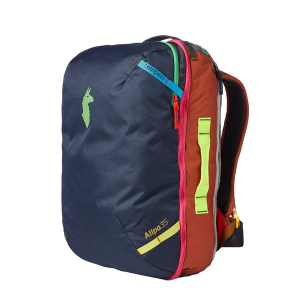
Cotopaxi is committed to sustainability across all of its sustainable backpacks, and sources non-virgin and alternative materials for a large number of products. In addition, the company is transitioning to using 100% reused, recycled, and ethical materials by 2025.
What is the Cotopaxi Allpa Del Dia best for? Air travel, office, work, light hiking.
Why is the Cotopaxi Allpa a sustainable backpack?
- Recycled Materials: The backpack is made from 100% repurposed nylon body fabric and 100% recycled polyester lining.
- Ethical Production: Cotopaxi is committed to ethical production, minimal waste, worker safety, fair labor practices, and environmental sustainability. Source: https://www.cotopaxi.com/pages/impact
FEATURES
- Activities: Backpacking, Air Travel
- Capacity: 35 liters
- Material: Recycled fabrics
PROS
- Includes a backpacking-style low-profile harness suspension system
- Lots of storage compartments
- Contoured shoulder straps
- Air mesh back panel for ventilation
- Adjustable sternum strap
- Cushioned hip belt to evenly distribute weight and keep you comfortable
- Perfect size for carry-on convenience
Patagonia Altvia

What is the Patagonia Altvia best for? Hiking, Trail Running
Why is the Patagonia Altvia a sustainable backpack?
- Recycled Materials: The backpack is made from recycled materials, including 100% recycled nylon and polyester.
- Fair Trade Certified: The backpack is Fair Trade Certified, which means that it meets high standards for worker safety, fair labor practices, and environmental sustainability.
- Repair and Recycling: Patagonia offers repair and recycling programs for its products, including the Altvia backpack, which helps to extend their lifespan and reduce waste. Source: https://www.patagonia.com/worn-wear.html
FEATURES
- Capacity: 17 liters
- Materials: Recycled nylon, Recycled polyester
PROS
- Lightweight
- Water-resistant
- Optimized for lengthy hikes and climbs
- Ventilated back panel and shoulder straps
Patagonia Guidewater
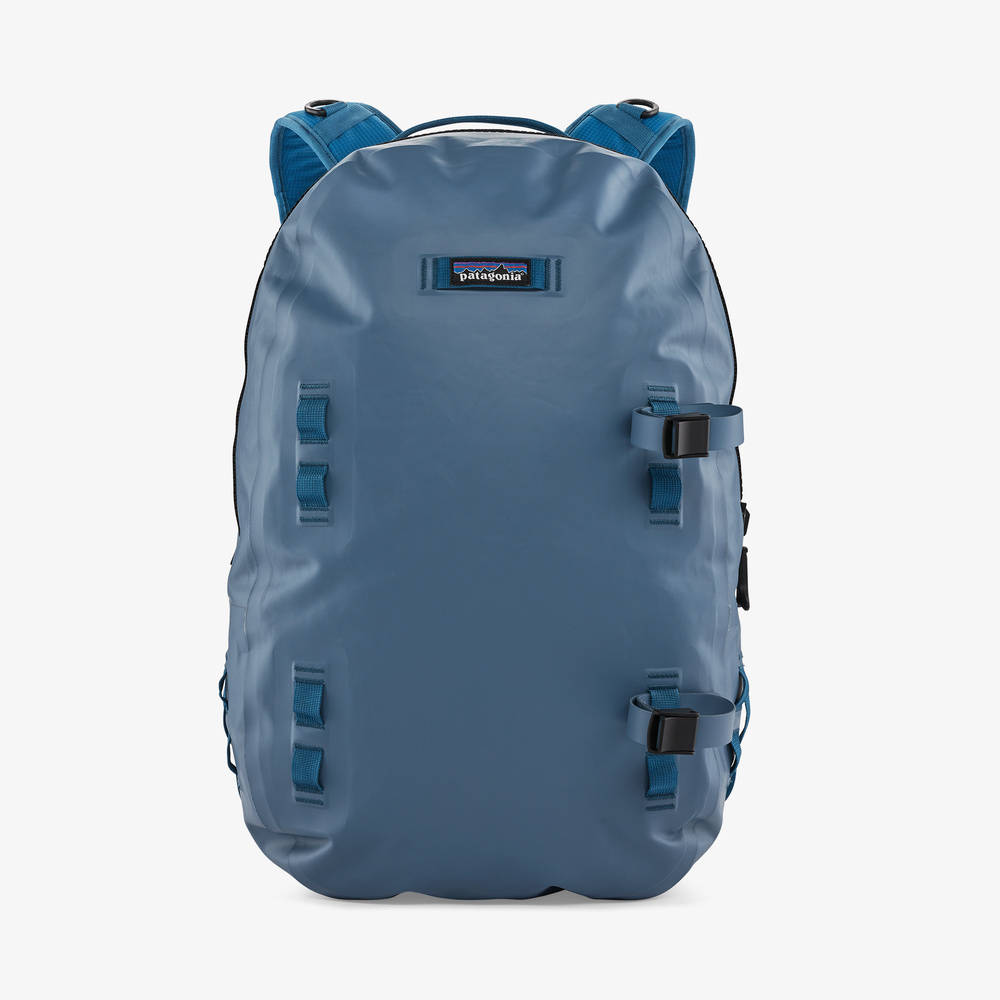
SPECS
- Activities: Daily Use, Hiking, Fishing, Travel
- Capacity: 29 liters
- Materials: Recycled nylon
PROS
- 100% waterproof
- Certified submersible
- Back panel and shoulder straps constructed with hydrophobic textiles that do not absorb or retain water
FAQs
What is a sustainable backpack?
Sustainable backpacks are made using materials that are either recycled or made of natural fibers. They are also designed to last longer than most standard backpacks so that you will not need to replace them as often.
While buying sustainable backpacks will not eliminate the problem of over-production and growing landfill waste, it will help reduce the overall negative impact on the environment. With more businesses producing sustainable backpacks, buyers now have a wider selection of options and designs to pick from.
We’ve compiled a selection of the best stylish sustainable backpacks that are designed to last for many years and made from recycled and/or natural materials.
How are backpacks recycled?
If your old backpack is still in usable condition, it can be donated to local charities like Out of the Closet or Goodwill.
If the backpack is not in working condition, it may be accepted at a local municipal or private recycling facility. Once delivered to the recycling station, the various parts of the backpacks are manually or mechanically separated. If possible, the cotton, fiber, plastics, and metals will be collected, separated and melted to produce other useful items.
What are eco friendly backpacks made of?
Eco-friendly backpacks are produced from renewable, biodegradable, and non-toxic materials. This includes both recycled and natural fabrics, including polyester, nylon, organic cotton canvas, and hemp. Sustainable backpacks are often of better quality and greater durability.
How many plastic bottles are used to make a sustainable backpack?
The number of recycled plastic bottles needed to created a new backpack depends on the size and capacity of the backpack. On average, 10 – 20 recycled plastic bottles are needed to produce a 15 liter – 17 liter capacity backpack.
How are sustainable backpacks made from plastic bottles?
The clear plastic PET bottles are collected and cleaned in the recycling sorting plant. The bottles are also soaked in acid to erase the labels.
The plastic bottles are crushed into little plastic flakes. The plastic flakes are melted into microscopic pellets.
The pellets are heated again, then extruded and spun into thread. The thread is woven into cloth and dyed. The cloth is sewn together to create a new backpack.
Sustainable Fashion Educational Resources
- Global Plastic Waste: According to the United Nations, approximately 300 million tons of plastic waste are produced every year, and only 9% of that plastic is recycled. This means that a significant amount of plastic waste ends up in landfills, oceans, and other natural environments, contributing to environmental pollution and damage. Source: https://www.unenvironment.org/interactive/beat-plastic-pollution/
- Environmental Impact of the Fashion Industry: The fashion industry is one of the largest contributors to environmental pollution and damage, with an estimated 92 million tons of textile waste produced each year. This waste can take hundreds of years to decompose, and often ends up in landfills or incinerators, contributing to greenhouse gas emissions and other environmental problems. Source: https://www.ellenmacarthurfoundation.org/publications/a-new-textiles-economy-redesigning-fashions-future
- Benefits of Sustainable Materials: Using sustainable materials in product manufacturing can have a significant impact on reducing environmental damage. For example, a study by the Textile Exchange found that organic cotton farming can reduce water usage by up to 91% compared to conventional cotton farming, and can also reduce greenhouse gas emissions and soil erosion. Source: https://textileexchange.org/wp-content/uploads/2019/06/2019-TE-Quick-View-of-Organic-Cotton.pdf
- Importance of Circular Economy: The circular economy, which focuses on designing products and processes that reduce waste and promote reuse and recycling, is becoming increasingly important for sustainability efforts. A report by the Ellen MacArthur Foundation found that transitioning to a circular economy in the fashion industry could reduce greenhouse gas emissions by up to 50% and reduce water consumption by up to 70%. Source: https://www.ellenmacarthurfoundation.org/publications/a-new-textiles-economy-redesigning-fashions-future
Related posts:
Fair Trade Finder makes product and service recommendations, based on thorough research and comparison analysis. Read more.
Portable Power
- Jackery vs BLUETTI: Which Portable Power Station is Right for You?
- EcoFlow vs Jackery: Which Portable Power Station Is Best for You?
- Jackery Vs Goal Zero: Which Eco-Friendly Power Source Is Right For You?
- How to choose a portable power station for home use: a comprehensive guide
- Portable Power Station Maintenance Guide: Tips & Tricks
- The Benefits of Portable Power Stations for Natural Disasters

